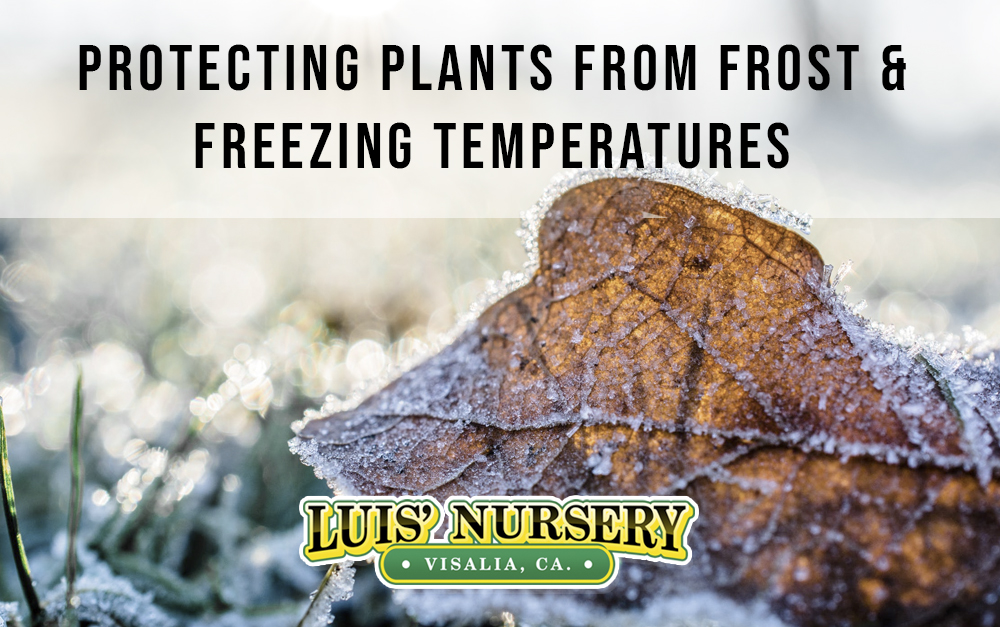As winter approaches many of us tend to think about cozy blankets, pumpkin spice lattes and pleasant evenings around a crackling fire. Look out the window, though, and you’ll realize that your favorite plants might need some protection as well, especially with frosty nights and freezing temperatures just around the corner.
Here in the Visalia and San Joaquin Valley area (Zone 9), we’ve passed the annual first frost date and overnight lows continue to drop. If you haven’t put together a protection plan for your plants yet, now’s the perfect time.
Frost injures plants by causing ice crystals to form in plant cells. This makes water unavailable to plant tissues and disrupts the movement of fluids. Frost-damaged plants will at first appear water-soaked, then shrivel, turn dark brown or black, then die.
Not all plants are susceptible to cold, though. For example, conifers and deciduous trees (that lose their leaves in the winter) can weather the winter just fine on their own. Perennials that naturally die back each fall and reappear in spring are also equipped to survive without assistance.
Plants that are in danger from frost include tropical plants, citrus, some succulents, avocado trees, warm-weather annuals, and warm-weather fruits and vegetables. If you have these in your garden, it’s good to pay attention when temperatures start dropping.
How to protect plants in winter
Protecting plants when temperatures drop in California can be done using 3 simple elements: Water, Heat and Frost Covers.
Water: It may seem counter intuitive, but water can provide protection from freezing temperatures. When dry soil freezes, moisture is pulled from the root, causing damage. If soil is moist, it can freeze without harming roots. Wet soil also holds more heat than dry soil. (One exception to this rule is for succulents – leave them dry.) When the forecast calls for 32 degrees or below at night, water your plants lightly in the late afternoon or early evening.
Heat: Moving potted plants inside, into a greenhouse, or even grouping them together to conserve heat is the first course of action you can take. For plants in the ground try protecting them with frost covers (more on that below) or using heat-producing decorative lights. Old-fashioned Christmas lights – the ones that get warm – wrapped around the trunks and limbs of citrus, avocado and other frost-sensitive trees and bushes not only look pretty but are very good at keeping frost damage away.
Frost Covers: Protect tender plants and trees with frost covers you can purchase here at Luis’ Nursery in Visalia or make yourself. Sheets, blankets, burlap, shade cloth or newspaper can be used in pinch. Mature plants and trees can handle the weight of frost covers, but for smaller more delicate plants use sticks or other material to prop up covers and prevent crushing. Covering or tenting should be done in the early evening when freezing temperatures are predicted, then removed in the morning after frost has thawed to allow for healthy air circulation.
For questions about using frost covers and caring for trees and plants during winter’s cooler temperatures, please feel free to call us at 559-747-5015 or talk to one of our garden and landscape experts in person. You can also follow us on our Facebook or Instagram accounts for the latest in nursery news.

